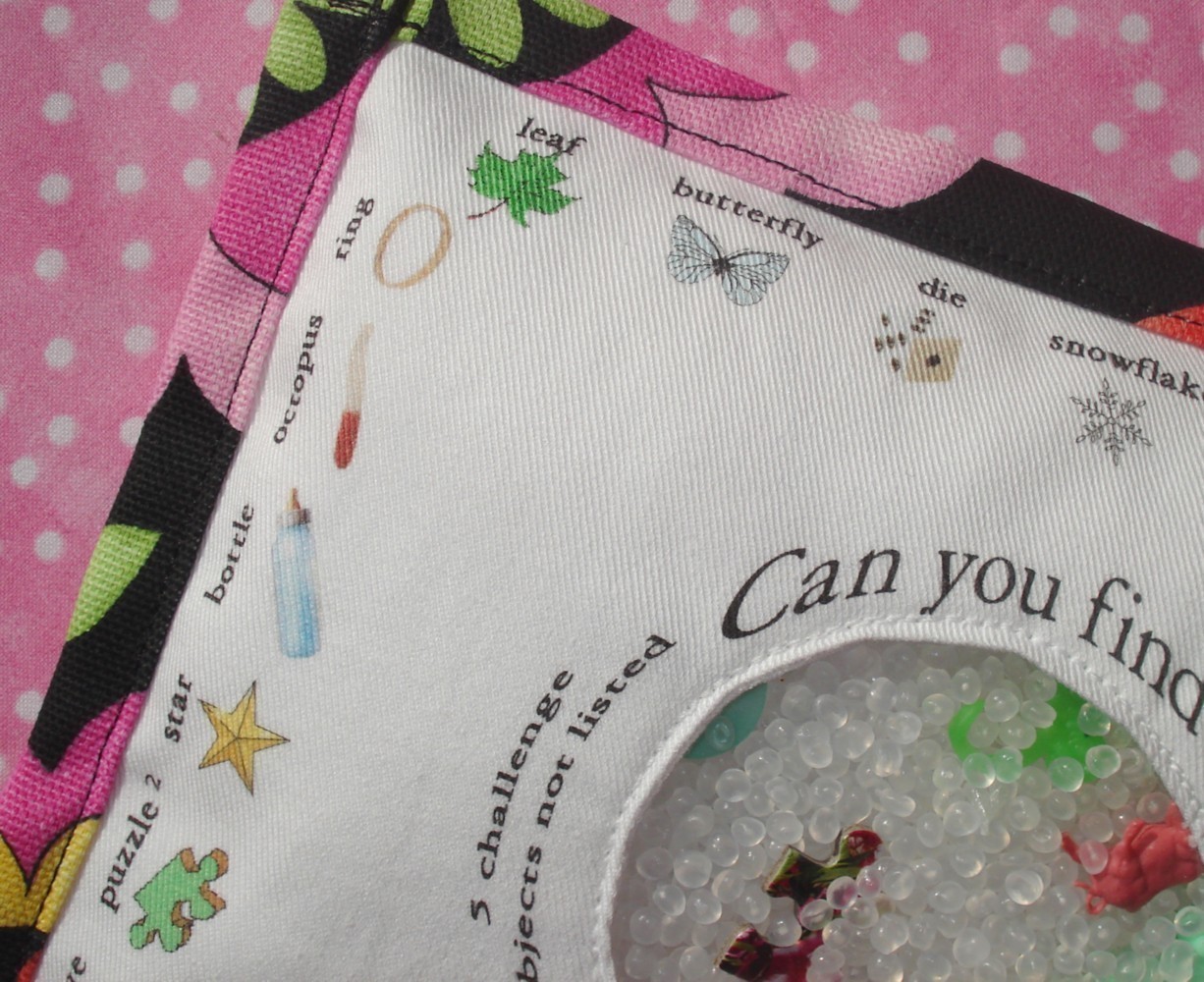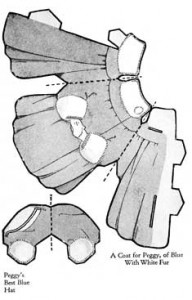
The Upscale Baby Blog (“Reviews of Stylish Baby Gear and Inexpensive Alternatives by Real Moms”) has been running a terrific series by Susan Maphis on the law, with many posts examining the law’s real-world impact on small makers of such products as cold-weather baby capes, eco-friendly animal dolls, personalized ceramic wall plaques, made-to-order coordinated mother-daughter outfits, custom quilts, organic-fiber baby sweaters, and toy barns from reclaimed wood. It makes for sad (some of the makers have already resigned themselves to going out of business) but important reading.
Posts Tagged ‘CPSIA’
CPSIA Blog Day #2: Etsy’s Gallery of Unaffordability
 We posted a week and a half ago about the cute baby quilt priced at $3,530 — formerly $58, but with a new higher price to cover the required testing under CPSIA. (In general, items with many colors and components are hardest hit by the law’s onerous testing requirements.) At Etsy, the online crafts market, you can check out a whole gallery with dozens of “CPSIA specials” reflecting the new cost structure that Reps. Henry Waxman, Bobby Rush and their colleagues have succeeded in inflicting on the handcrafted market as of Feb. 10. (If the link doesn’t work, search “CPSIA” and sort by highest-price-first).
We posted a week and a half ago about the cute baby quilt priced at $3,530 — formerly $58, but with a new higher price to cover the required testing under CPSIA. (In general, items with many colors and components are hardest hit by the law’s onerous testing requirements.) At Etsy, the online crafts market, you can check out a whole gallery with dozens of “CPSIA specials” reflecting the new cost structure that Reps. Henry Waxman, Bobby Rush and their colleagues have succeeded in inflicting on the handcrafted market as of Feb. 10. (If the link doesn’t work, search “CPSIA” and sort by highest-price-first).
The $17,240 travel toy shown above, which has more than 40 different components, is at present among the most costly. (Its pre-CPSIA price: $20). Here is a $3,940 pair of toddler socks:

And if you’re on a limited budget, here’s a $900 “Elsa the Elephant” stuffed toy:

(Note to any consumer-advocacy lawyers in the readership whose first impulse is to cross-examine the crafters who posted these items: yes, it’s true, the cost of the testing can be spread over the entire lot of goods produced in the particular style and size. So the mom who makes the polka-dot socks at her kitchen table and sells them on Etsy doesn’t really have to recoup her $3,940 expected testing bill by selling one $3,940 pair of socks. She could instead break even by selling 10 pairs at $394 each, or even 197 pairs at $20 each. You sure tripped her up on that!)
CPSIA Blog Day #1: Past CPSIA bloggers

Among the bloggers who’ve done excellent posts on the Consumer Product Safety Improvement Act, but who don’t primarily blog on this or nearby topics, are BeliefNet’s Rod Dreher (who was onto the thrift store angle very early), John Schwenkler of Upturned Earth, Mark Thompson @ Publius Endures, economist Tyler Cowen at Marginal Revolution, Advice Goddess columnist Amy Alkon, Iain Murray at CEI “Open Market”, Jeff Nolan at Venture Chronicles, Patrick @ Popehat, Eve Tushnet (scroll a lot to Jan. 15), and leading education blogger Joanne Jacobs.
Do all of them know that today is CPSIA Blog Day, in which hundreds of bloggers will be calling attention to the law’s terrible effects? I hope so, because it would be great to hear their voices again as part of today’s chorus.
P.S. Great response! Posts from Amy Alkon at Advice Goddess, Patrick at Popehat, John Schwenkler, Mark Thompson at the wonderfully named League of Ordinary Gentlemen, and Eve Tushnet at Ladyblog.
Tomorrow (Wed.): CPSIA blogging day
I’m not sure who came up with the idea (maybe these people at Etsy?), but tomorrow, Wednesday, January 28, has been nominated as CPSIA blogging day, and I expect hundreds of bloggers will be taking part, looking at different aspects and consequences of this immensely destructive new law. My posts on it can all be found here, and the two Forbes pieces I’ve written recently are here and here. While you’re here, why not enjoy all of Overlawyered? You can start on the front page, or browse by tag to find posts on topics of interest to you.
In the mean time, check out Forbes’s latest piece about the law, in which Paul Rubin, former chief economist at the Consumer Product Safety Commission, explains why CPSIA would flunk any imaginable cost-benefit test.
CPSIA links
Away from my desk for three days, and just catching up with the flow of commentary on the issue:
- Too much reporting in local press sources to round up, but check out, e.g., the Knoxville News-Sentinel, Fredericksburg (Va.) Freelance-Star, Arizona Republic, and Nashville Business Journal. Carter Wood at ShopFloor links to excellent coverage in, among other places, the Grand Rapids, Mich. (Jennifer Ackerman-Haywood, “Running with Needles”) and Portland, Maine newspapers.
- Law compared to “an anvil on a onesie” [Small Things Considered; more; via]. Crafts-market site Etsy has an interesting thread on vintage sellers and the law, among many other valuable forum discussions.
 Mami Mobile rounds up many links from affected bloggers. More: Daily Grind of a Work at Home Mom, Eve Tushnet (scroll to Jan. 15), Kim’s Play Place with many updates, and Evolving Excellence.
Mami Mobile rounds up many links from affected bloggers. More: Daily Grind of a Work at Home Mom, Eve Tushnet (scroll to Jan. 15), Kim’s Play Place with many updates, and Evolving Excellence. - Until only weeks ago, Henry Waxman and his allies were blasting the beleaguered leadership of the CPSC for not being tough enough on producers of kids’ goods; now Waxman seeks to reposition himself as favoring deregulatory steps that the Commission has unaccountably failed to implement. Some appear to be taken in by this imposture, but not blogger Common Room, who has been doing a series of posts documenting why Waxman and his Congressional colleagues were and are the key decision-makers and ought not to be allowed to shift the responsibility to others;
- Who’s dug in to the “great law, no need to change, only evildoers oppose it” position? Well, there are the trial-lawyer-allied, student-fee-funded PIRG groups (Seattle Times), and, even more stridently, the trial-lawyer-defense outfit Center for Justice and Democracy (The Pop Tort). Eric Husman and Common Room have taken a look at the law’s supporters as well. But note an exception: InjuryBoard, the large online trial lawyer site, just ran a surprisingly open-minded interview with anti-CPSIA activist Kathleen Fasanella of Fashion Incubator;
- “[T]he only feasible alternative is for Congress to delay implementation. Many in Congress will not agree to this, in part, because of pressure from the consumer groups ….However, Congress may do something this week or next to either clarify the law, give further guidance on legislative intent to the CPSC, or maybe even delay implementation.” [Ross/Product Liability Prof Blog]. More from the law and policy blog world: Prince/PLProf; Bader/CEI “Open Market”; Bill Childs, TortsProf.
CPSIA: Part II at Forbes.com
Just as my earlier piece on CPSIA was going to press last Friday at Forbes there came a new development: Reps. Henry Waxman (D-Calif.) and Bobby Rush (D-Ill.), who sponsored the law and have opposed efforts to revisit it, issued a letter that seemed to soften their stance a bit and hold out hope for more exemptions. The magazine asked me to analyze these new developments and the result is up now. Unfortunately, the news is bad: the letter’s suggestions for exemptions are piecemeal, narrow, and much too late. We are still on course for a calamity should the law’s provisions go into effect Feb. 10 and (later round) in August — a calamity that Waxman and other sponsors of the law had every reason to see coming when they passed the bill last year.
In the mean time, as I point out, the Waxman/Rush letter raises the question of whether our leaders on Capitol Hill realize that ordinary children’s books are often bound with metal staples, and that toddlers seldom convey to their mouths such objects as bicycle tires and dartboards. The piece, again, is here (& Matt Bandyk, U.S. News).
More: In comments on an earlier post, kids’ wear entrepreneur Amy Hoffman says the New York Times still has not covered this debacle — a crucial point, since it’s hard to get an issue truly onto the news agenda at other highly ranked media outlets if the Times refuses to notice it (though some are covering the story anyway, as with Bloomberg in a pretty good piece today). There’s something truly crazy here, given that the Times plays a conscious role as a key trend-spotter in both the design world and the apparel trade, as well as the world of law and governance.
In addition, Common Room provides some sorely needed guidance to protesters as to where their CPSIA outrage should be directed: the fact is that Henry Waxman, as chair of House Commerce, is by far the #1 decisionmaker in whether or not this law will be changed. (Next in importance? His counterparts over at the U.S. Senate.) Protests to other House members are significant mostly in creating pressure on Waxman; the ordinary course of business in the House is to leave these matters to the Committee chair, so protesters must hope to get across the message that the ordinary course of business won’t do this time. As for the incoming Obama administration, as Common Room explains, it has few if any ways of intervening directly to prevent a business calamity on Feb. 10 and a further calamity in August; its main power is the power of picking up the phone and jawboning Waxman with the message that he cannot expect cooperation on unrelated things he wants unless he un-bottles up legislation to fix CPSIA. Waxman is also known to listen to the lawyerly pressure groups like Public Citizen and U.S. PIRG, and to Consumers’ Union. My personal view is that while it’s pointless to try to change the minds of these three groups — they will remain utterly in the grip of their ideology or constituency, and unsympathetic to producers — they might be made to see the prudence of urging compromise on Waxman lest national attention to the issue damage their own images.
CPSIA employee whistleblower provisions
As if all the other problems with the law were not bad enough, Common Room notes that its provisions conferring new legal protections on disgruntled employees take us another step closer to being “a nation of informants”.  Whistleblower provisions are frequently used as a weapon in hardball employment litigation, where “find something to blow the whistle about and they won’t lay a hand on you” is, unfortunately, often sound legal advice for an employee who’s at odds with the boss for other reasons. Maybe the stakes are so high in, say, an area like defense contracting, or where safety violations endanger actual lives, that it’s worth the high cost of some such rules. But for paperwork violations at makers of cardboard puzzles and baby hats?
Whistleblower provisions are frequently used as a weapon in hardball employment litigation, where “find something to blow the whistle about and they won’t lay a hand on you” is, unfortunately, often sound legal advice for an employee who’s at odds with the boss for other reasons. Maybe the stakes are so high in, say, an area like defense contracting, or where safety violations endanger actual lives, that it’s worth the high cost of some such rules. But for paperwork violations at makers of cardboard puzzles and baby hats?
(GRAPHIC: Zesmeralda at Flickr, some rights reserved, Creative Commons).
CPSIA, continued
On Friday there was a noteworthy development on CPSIA: Reps. Henry Waxman (D-Calif.) and Bobby Rush (D-Ill.) and Sens. Mark Pryor (D-Ark.) and John D. Rockefeller IV (D-W.Va.) sent a letter to Nancy Nord, chairman of the Consumer Product Safety Commission, endorsing some softenings in the law’s regulatory interpretation, which seems to represent a modest shift (if not an admitted one) from their earlier position. At the same time, Waxman, Rush et al held the line against any demand to revise the law itself, despite the outcry being heard from small producers, retailers and secondhand sellers across the country (more: my recent Forbes piece, some reactions).

On the same day they sponsored a closed-door briefing for Hill staffers which was billed as correcting supposed misreporting and confusion about the law and its onerousness. Such briefings are common when members’ offices are being hit by a torrent of constituent inquiries and want to know how to respond.
An editor at a large publication has asked me to write something about these new developments, so I’ll be working on that piece over the next day or two. In the mean time, let me recommend as a good place to start two excellent blog posts by Rick Woldenberg of Learning Resources Inc. (first, second).
The first post responds to the apparent new strategy of Waxman and Co. of proposing to exempt a couple of categories of generally safe products (ordinary children’s books, fabric-only garments with no plastic or metal fasteners) in the apparent hope that 1) Congress will look like it’s reasonable and “trying to do something”; 2) a few of the more visible (and politically salient) critics of CPSIA will be placated, at least for the moment. (One might add a third objective, whether consciously formulated or not: running the clock until Feb. 10 in the expectation that many of those protesting will at that point be out of the game — no longer in the kids’ product business — and so in less of a position to cause them political mischief.)
Read On…
“Flowery Fall Baby Rag Quilt”

You may want to buy this cute item before the requirements of CPSIA go into effect on Feb. 10, when according to the Etsy listing its price will go up from $58 to $3,530 to cover the required testing.
January 17 roundup
- Tons and tons of favorable reaction to my Forbes piece on CPSIA: commenters there, Etsy thread, sampling of blogs: Polka Dot Patch, Heartkeeper’s Common Room, Colby Lane Designs, Baby Gardner’s (aw), Tristan Benz (double aw). Others who’ve gotten into the act: Iain Murray/Open Market, Jeff Nolan, Patrick @ Popehat (SSFC). New: Superblogger Glenn Reynolds at Instapundit, John Schwenkler, Carter Wood at ShopFloor, Ramesh Ponnuru at National Review “Corner”.
- “California Lawmakers Rush to Rescue Good Samaritans in Wake of Court Ruling” [The Recorder, Calif. Civil Justice Blog, earlier]
- “America needs a tax code simple enough for the Treasury secretary to figure out” [Taranto, WSJ]
- “Federal judge might ax $2M legal fee in Seattle ‘pro bono’ case” [ABA Journal, earlier here and here]
- Indictment of Long Island attorney Felix Vinluan dismissed; charged for advising nurses it was okay to quit their jobs [Cernovich, Volokh, Greenfield, Mitchell Rubinstein]
- “Apartment owner sued for common area second hand smoke” [Womble Carlyle]
- “Tulsa World sues alt-weekly over circulation story” [Romenesko and more, Shafer, BatesLine with many links] Update: drops suit against publication, leaving suit against columnist [Romenesko]
- “No evidence of a causal link between restaurants and obesity”. Hey, that could derail some lawsuits [Pethokoukis, U.S. News, on Northwestern/Berkeley study]
